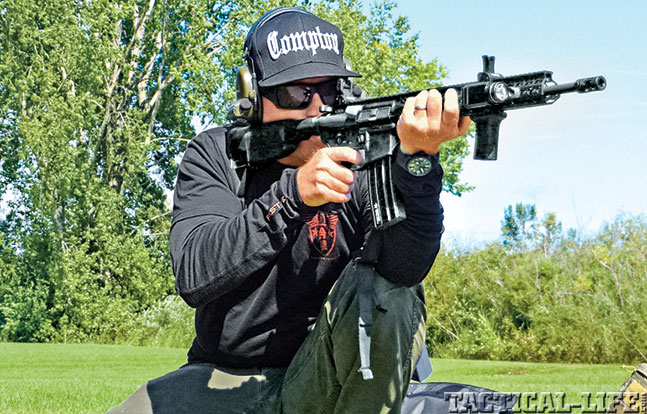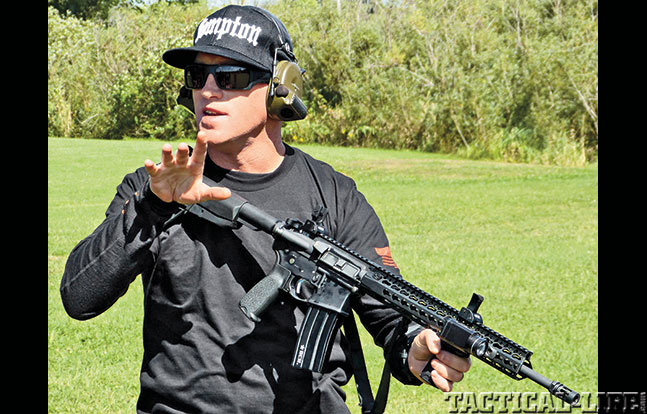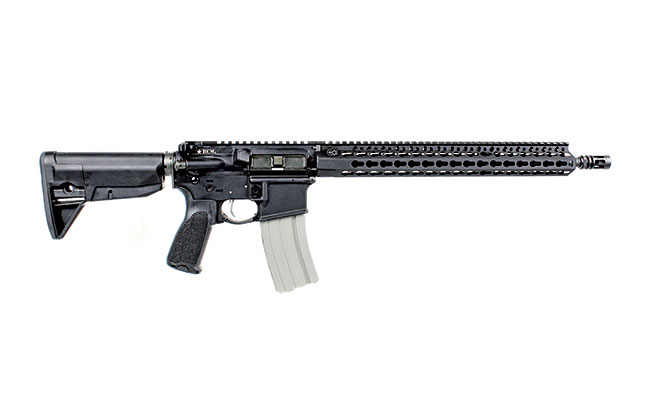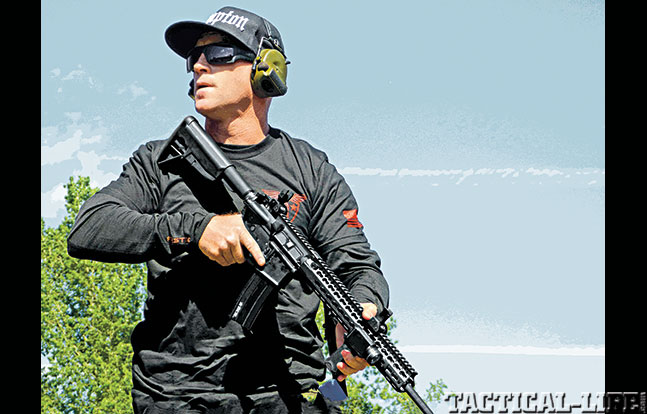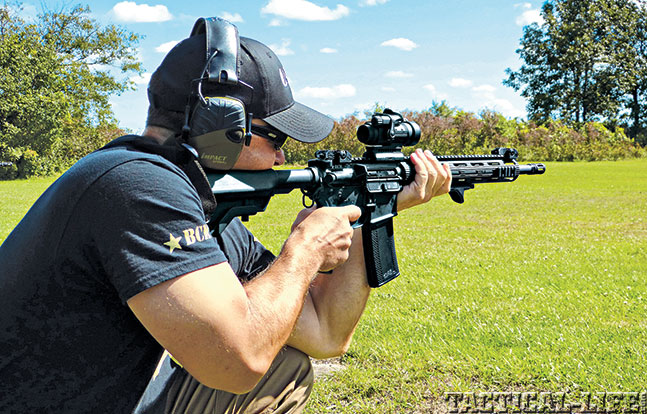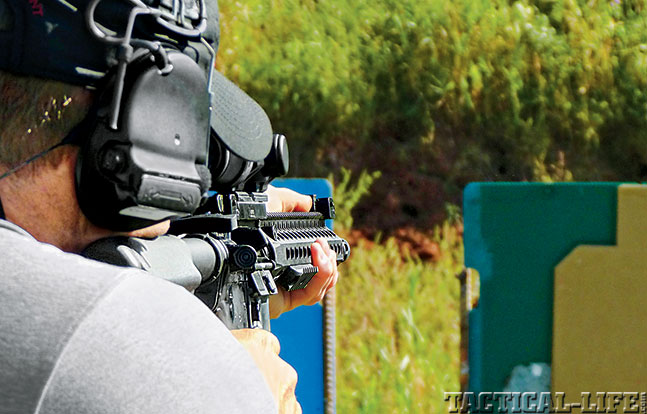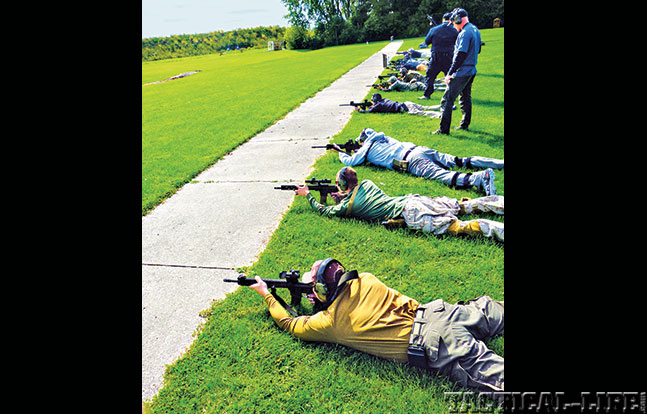For Kyle Defoor, the path to becoming a U.S. Navy SEAL and serving in its most elite Special Mission Unit began before he graduated from high school. A football and track standout from a small town in northwestern Alabama, Defoor was living a life of hometown notoriety most young men would envy. But after taking a career interest test that determined he was suited for nothing he found interesting, Defoor met a Navy recruiter who showed him a Vietnam-era film on the Navy SEALs. The challenge of and preparation for becoming a frogman struck a chord with him, and he made it his singular focus for the next two years. To the shock of his parents and hometown, he quit football and track, joined the cross-country team to train himself in long-distance running, and three times per week drove three hours round-trip to train with the University of Alabama swim team.
- RELATED: Meet Bravo’s New Duty-Ready RECCE-16 KMR Mk2
- RELATED: Bravo Company’s AR Trio: The RECCE, EAG and Jack
His unusually mature vision and monomaniacal commitment paid off. Defoor enlisted in the Navy, passed BUD/S (Basic Underwater Demolition/SEAL training), earned his SEAL trident and became a member of SEAL Team Eight. Over a career that spanned nearly 10 years, Defoor served as an assaulter and sniper with Naval Special Warfare and was awarded a Bronze Star for Valor in Afghanistan. Today, Defoor runs Defoor Proformance Shooting, a marksmanship and tactics company training both civilians and the world’s most elite military and law enforcement units.
Having now spent nearly as many years as a firearms trainer as a SEAL, Defoor has seen fads and concepts come and go. So when he mentioned he had collaborated on the development of a carbine with Bravo Company Manufacturing (BCM) and a matching optic from U.S. Optics, TACTICAL WEAPONS decided to put his work to the test at his two-day pistol and carbine course in Oshkosh, Wis.
Advertisement — Continue Reading Below
Professional Grade
Defoor became aware of BCM rifles gradually. Several of his fellow shooters had BCM rifles, and the reports were all the same—they always work. Though sponsored by a different manufacturer at the time, he began to notice more and more BCMs showing up at his classes, and their users were rarely those who had to step off the line to fix problems and never suffered catastrophic problems. “I found it odd. There were consistently so few problems with this brand of rifle. No loose barrels, no failed extractor springs, no gas block issues, nothing we typically see after heavy use with all the other production models,” says Defoor. So when BCM founder Paul Buffoni called, Defoor was receptive. Buffoni, a retired U.S. Marine, has made incorporating feedback from the field a relentless habit in the development of the BCM line of firearms. To this end, Defoor had thoughts and Buffoni listened.
Advertisement — Continue Reading Below
“Defoor runs Defoor Proformance Shooting, a marksmanship and tactics company training both civilians and the world’s most elite military and law enforcement units.”
Their work together produced a variation of the BCM RECCE that Defoor tweaked to align with the functionality sought after by many of the reconnaissance shooters he trains. First and foremost, the rifle had to be reliable and made with quality components. Second, it had to be as light as possible without sacrificing performance. And finally, it had to deliver accurate rounds at close and medium ranges, particularly when paired with an optic.
Called simply the BCM RECCE-16, the rifle is a winner. The design centers largely on the Enhanced Light Weight (ELW) upper. The barrel is a partially fluted, continuously tapered design. It has a heavier profile near the chamber and tapers toward the muzzle. Weighing 1.38 pounds, it is 11 ounces lighter than a standard mid-length gas system barrel. But like all BCM barrels, it still features mil-spec barrel steel, a manganese-phosphate finish, and a chrome-lined bore and chamber. All BCM barrels are also high-pressure and magnetic-particle inspected.
Advertisement — Continue Reading Below
The lightweight complement to the fluted barrel is the 5.5-ounce, 13-inch-long KeyMod Rail (KMR). Manufactured from a blended aluminum and magnesium alloy, it weighs 30 to 40 percent less than aluminum with the same strength properties. BCM has also designed a proprietary mounting, indexing and locking system that mitigates rail movement created by heat from the barrel nut. BCM describes the rail’s exterior surface as “a ceramic-like coating with superior wear resistance when compared to anodizing or even hard chrome.” Developed by Eric Kincel, the director of BCM’s product development team, the KMR’s KeyMod interface system provides four additional offset mounting positions between the traditional 3, 6, 9 and 12 o’clock positions. Ultimately, the KeyMod system and the composite alloy materials provide a lighter, cleaner and smoother mounting surface than traditional Picatinny systems.
The RECCE-16 also features an ALG Defense Advanced Combat Trigger (ACT). The ACT is a single-stage, mil-spec trigger tuned to operate with less grit and a sharper break than traditional designs. The ACT parts are differentially coated with nickel-boron and nickel-Teflon to reduce friction and enhance wear resistance. Its pull weight is not lower than the 5.5-pound M4/M16 minimum weight specifications.
The RECCE-16 comes with a rugged, lightweight and adjustable BCM Gunfighter stock. Defoor notes, “We dropped it from 21 feet, not necessarily on purpose, and it didn’t so much as crack.” The Gunfighter features both a quick-detach (QD) swivel socket and a modular VBOST (Vehicle Borne Operations Sling Tab) that interfaces with the shooter’s rigger band or bungee to secure the rifle’s sling against the stock when the carbine is not in use. The RECCE-16 also comes with a tool-less, direct-attach, KeyMod vertical foregrip. Made with a slight angle that can be oriented to the rear or front, the Gunfighter vertical grip attaches through the KeyMod system and tightens with a twist of the grip, which locks into place when the grip is fully seated.
Advertisement — Continue Reading Below
Running The Gun
I caught up with Defoor outside of Oshkosh, Wisconsin, for his two-day pistol and carbine course. He had arrived several days earlier and hand-assembled a rifle identical to the one I would be running in the course. Like most of his open-enrollment courses, the students at this training session ranged from military and law enforcement personnel to civilians.
Advertisement — Continue Reading Below
“The BCMs adapt and grind through shooting challenges like a Willys jeep through mud and sand.”
Along with the BCM RECCE-16, I ran a U.S. Optics SR-4C 1-4X scope on a Bobro QD mount. The SR-4C features a mil-scale reticle with a daylight-visible red dot in the middle of the crosshairs. The SR-4C and the Bobro mount were both Defoor’s specs for the course setup. “I have worked with U.S. Optics to help develop an optic that can function both at CQB range as well as quickly adjust to mid-range magnification.” The SR-4C’s red dot does not change with magnification, so the shooter can utilize it throughout the magnification range of the scope. Defoor also adds, “The scope is the toughest optic I have seen. Its capped turrets are functional protection, and I have seen it dropped onto the turret during an exit from a helicopter onto concrete. The optic didn’t even lose its zero.”
As this course was conducted on a flat range, I ran a simple High Speed Gear battle belt with taco mag pouches and a Raven Kydex holster for my Glock 35. I used Black Hills remanufactured ammo for the pistol and new, 55-grain Black Hills ammo for the rifle.
Advertisement — Continue Reading Below
Minimum Effective Dose
As a gunfighting instructor, Defoor has mastered the “minimum effective dose.” This means he has consciously eliminated any instruction, drill or repetition that doesn’t contribute to the skillset he has in mind for the shooter. This not only accelerates learning, but it also gets the shooter further down the road to proficiency within the two-day period. Through 10 years of training shooters, Defoor selects drills and round counts that will immediately tease out shooter’s weaknesses along with direct feedback to adjust techniques. Defoor says, “The targets and timers don’t lie. Either the bullets are being fired in the allotted time and hitting the bullseye, or they are not. It’s critical for each student to judge himself honestly and adjust.”
Advertisement — Continue Reading Below
Two days is ultimately not a great deal of training time, so the drills and progression came quickly. This class was made up of fairly proficient shooters, so we were able to cover ground quickly.
The instruction began with the pistol and transitioned into the carbine. I had zeroed the U.S. Optics SR-4C to the BCM RECCE-16 prior to the course and had put about 500 rounds through the rifle. I had no failures or malfunctions before the course and was curious to see what stress the rifle could handle. The optic only required a slight elevation adjustment as I had zeroed at nearly 7,000 feet above sea level and Oshkosh lay at 790 feet. Otherwise, the Utah-to-Wisconsin flight had not affected the optic.
Defoor spends most of the first day on the “zero.” While this might sound excessive, it teaches each shooter to know precisely where his round is hitting at various distances. Defoor requires accountability for round placement and understanding of how a shooter’s carbine or pistol is set up and where the rounds will land at a given zero, at several distances. He simultaneously uses the groups at distances to incorporate fundamentals and tactical considerations. This is concentrated instruction without filler for fluff. Though experienced, the shooters were challenged and improved. In my case, some minor adjustments on a grip I had thought I had perfected years ago yielded measurable results.
Advertisement — Continue Reading Below
Ian Ross, a gunsmith and recreational shooter noted, “It was the mountain of little things that allowed me to make the improvements I sought. Learning about angular and parallel deviation, shooting his cadenced speed-shooting drill (four circles and various times to shoot), grip tweaks, putting emphasis on violent action (pistol draw, high and low ready with rifle) and moving at the beginning of the ‘beep’ to decrease draw time … these things make real differences. He forced accountability and helped the shooter find the answers if they came up short on an exercise.”
Lessons Learned
From the BCM RECCE-16, I was looking for two things specifically: Would the rifle function properly throughout high heat and round-count drills, and would the lighter, fluted barrel heat up and throw rounds outside its initial cold bore zero tolerances. The overall setup on this light rifle was ergonomically comfortable, particularly with the added benefit of the rounded cheekpiece and the adjustable and slightly angled vertical foregrip. I ran a modified two-point sling with the strap attached to the buttstock and QD swivel mount anchored at the rear of the forearm.
The RECCE-16 grouped rounds within 1 inch at 100 yards from a prone position and maintained that consistency throughout the course, though my shooting didn’t always reflect it. In drills designed to demonstrate the stress of speed as well as accuracy, the rifle heated up but held its groups. When reverting to a prone or supported position between sessions of standing or kneeling courses of fire, the RECCE-16 always stacked the rounds within the original zero grouping. Out of nearly 1,500 rounds through the rifle, only one round failed to fire. There was a slight dimple on the primer, and it fired when reloaded. It’s hard to determine the cause of such a singular anomaly, but I otherwise had no failures to load or extract, no magazine seating issues, and never felt like the rifle was heating up to a point where it was uncomfortable to run.
Having run multiple BCM rifles in the past, the consistency was no surprise. The BCMs adapt and grind through shooting challenges like a Willys jeep through mud and sand. The difference with the RECCE-16 was the lighter weight and the small ergonomic tweaks provided by the BCM stock, foregrip and KMR rail. The rifle was a pleasure to run, particularly with the U.S. Optics scope.
FOR MORE INFORMATION
- Bravo Company: bravocompanyusa.com; 877-272-8626
- Defoor Proformance Shooting: kyledefoor.com
- U.S. Optics: usoptics.com; 714-582=195-
